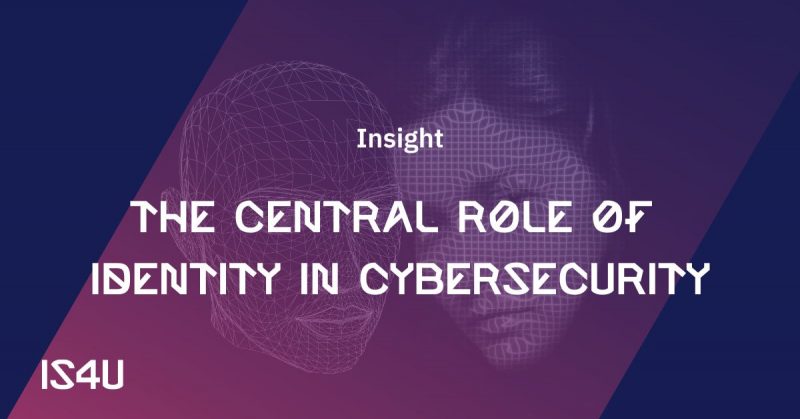In today’s increasingly digital world, cloud-based technologies are becoming more and more prevalent in businesses of all sizes. With this rise in cloud adoption comes the need for effective identity and access management to ensure secure data access and prevent data breaches. However, the unique challenges posed by cloud identity risks require a different approach compared to traditional identity risks.
In this blog post, we’ll explore why a different approach is necessary to tackle cloud identity risks effectively. We’ll also cover the key differences between cloud identity risks and other identity risks and provide insights on best practices for managing these risks.
So, sit back, relax, and get ready to dive into the world of cloud identity risks!
Understanding Cloud Identity Risks
Cloud identity risks refer to the potential threats and vulnerabilities that arise when businesses use cloud-based technologies to store, access, and manage data. Some examples of cloud identity risks include unauthorized access to sensitive data, phishing attacks, and malware infections.
One of the key differences between cloud identity risks and other identity risks is the distributed nature of cloud-based systems. Unlike traditional on-premises systems where identity and access management are centralized, cloud-based systems can be accessed from anywhere, making it difficult to control access and identify potential risks.
Cloud identity risks can also arise from the use of third-party cloud providers, which may not have the same level of security as in-house systems. This can create vulnerabilities that hackers can exploit to gain access to sensitive data.
Understanding the nature of cloud identity risks is crucial for businesses to effectively manage these risks and prevent data breaches. In the following sections, we’ll discuss why traditional approaches to identity management may not be sufficient for cloud identity risks and introduce a new approach that businesses can adopt to mitigate these risks.
Traditional Approaches to Identity Management
Traditionally, businesses have relied on on-premises identity and access management (IAM) solutions to manage user identities and control access to data. These solutions typically involve a centralized directory service and authentication protocols such as Lightweight Directory Access Protocol (LDAP) and Active Directory (AD).
However, with the rise of cloud-based technologies, traditional IAM solutions may not be sufficient to manage cloud identity risks. Traditional approaches rely on a perimeter-based security model, where access is granted based on the user’s physical location, making it difficult to manage access to cloud-based systems that can be accessed from anywhere.
Moreover, traditional IAM solutions do not provide the level of visibility and control required to manage cloud identity risks effectively. For example, traditional IAM solutions may not be able to detect and respond to threats such as identity theft, phishing attacks, and account takeovers, which are common cloud identity risks.
To address these limitations, businesses need to adopt a new approach to identity management that considers the unique challenges of cloud identity risks. In the following section, we’ll introduce a new approach to managing cloud identity risks that businesses can adopt to improve their security posture.
A New Approach to Cloud Identity Risks
To effectively manage cloud identity risks, businesses need to adopt a new approach that considers the unique challenges of cloud-based systems. This new approach involves a shift from perimeter-based security models to identity-centric security models.
Unlike traditional IAM solutions, identity-centric security models focus on the identity of the user rather than their physical location. This approach provides more granular control over access to data and enables businesses to detect and respond to threats in real-time.
The benefits of adopting an identity-centric approach to cloud identity management are significant. First and foremost, it enables businesses to improve their security posture by detecting and responding to threats more quickly. Additionally, it provides businesses with greater visibility and control over their data, reducing the risk of data breaches and improving compliance with data protection regulations.
Furthermore, an identity-centric approach can help businesses streamline their identity management processes, reducing administrative overhead and improving efficiency. Finally, it can help businesses achieve a seamless user experience by providing users with a single identity that can be used to access all cloud-based systems, reducing the need for multiple usernames and passwords.
In the following section, we’ll provide some best practices for implementing an identity-centric approach to cloud identity management.
Best Practices for Managing Cloud Identity Risks
Implementing an identity-centric approach to cloud identity management requires businesses to adopt a set of best practices that consider the unique challenges of cloud-based systems. Here are some tips for effective cloud identity management:
- Implement multi-factor authentication (MFA) – MFA is an essential security measure that provides an additional layer of protection beyond usernames and passwords. It involves using a combination of something the user knows (e.g., a password), something the user has (e.g., a smartphone), and something the user is (e.g., a fingerprint) to authenticate the user.
- Use a cloud-based identity and access management (IAM) solution – A cloud-based IAM solution provides businesses with the visibility and control required to manage cloud identity risks effectively. It enables businesses to set access policies based on user identities, monitor user activity, and detect and respond to threats in real-time.
- Implement a least privilege access model – A least privilege access model involves providing users with the minimum level of access required to perform their job functions. This approach reduces the risk of data breaches by limiting the amount of data that can be accessed in the event of a security breach.
- Conduct regular security assessments – Regular security assessments are essential to identify potential vulnerabilities in cloud-based systems and ensure that security policies are being enforced effectively.
By implementing these best practices, businesses can effectively manage cloud identity risks and improve their security posture. Effective cloud identity management provides several benefits, including:
- Reduced risk of data breaches – Effective cloud identity management reduces the risk of data breaches by limiting access to sensitive data and detecting and responding to threats in real-time.
- Improved compliance with data protection regulations – Effective cloud identity management enables businesses to demonstrate compliance with data protection regulations such as GDPR and CCPA.
- Improved efficiency and productivity – Cloud identity management streamlines identity management processes, reducing administrative overhead and improving productivity.
In this blog post, we’ve explored why cloud identity risks require a different approach and introduced a new approach to managing these risks. We discussed the unique challenges of cloud identity risks, the limitations of traditional approaches to identity management, and the benefits of adopting an identity-centric approach.
To effectively manage cloud identity risks, businesses must adopt a new approach that focuses on the identity of the user rather than their physical location. This new approach involves implementing multi-factor authentication, using a cloud based IAM solution, implementing a least privilege access model, and conducting regular security assessments.
Effective cloud identity management provides several benefits, including reduced risk of data breaches, improved compliance with data protection regulations, and improved efficiency and productivity. By adopting an identity-centric approach to cloud identity management and implementing the best practices discussed in this blog post, businesses can improve their security posture and reduce their risk of data breaches.
So, if you’re a business looking to manage cloud identity risks effectively, it’s time to adopt the new approach. Remember, the security of your data is only as strong as your weakest link, and cloud identity risks are a significant threat that cannot be ignored.
Interested to take a deep dive into this matter with one of our experts?
Do not hesitate to get in contact!


